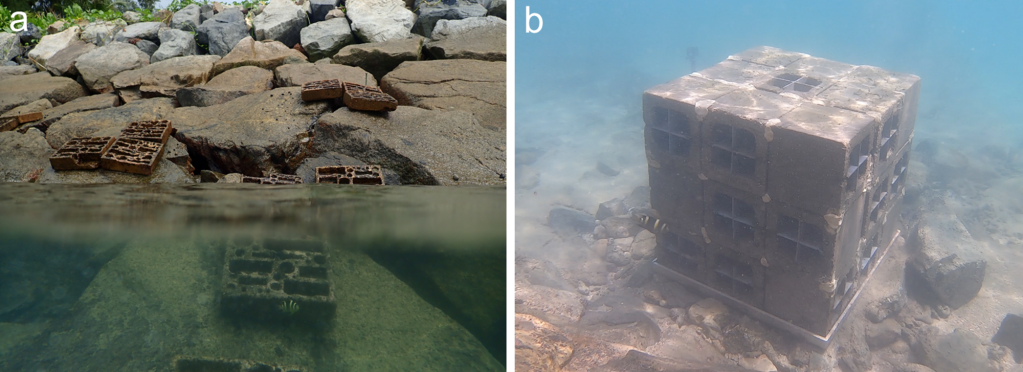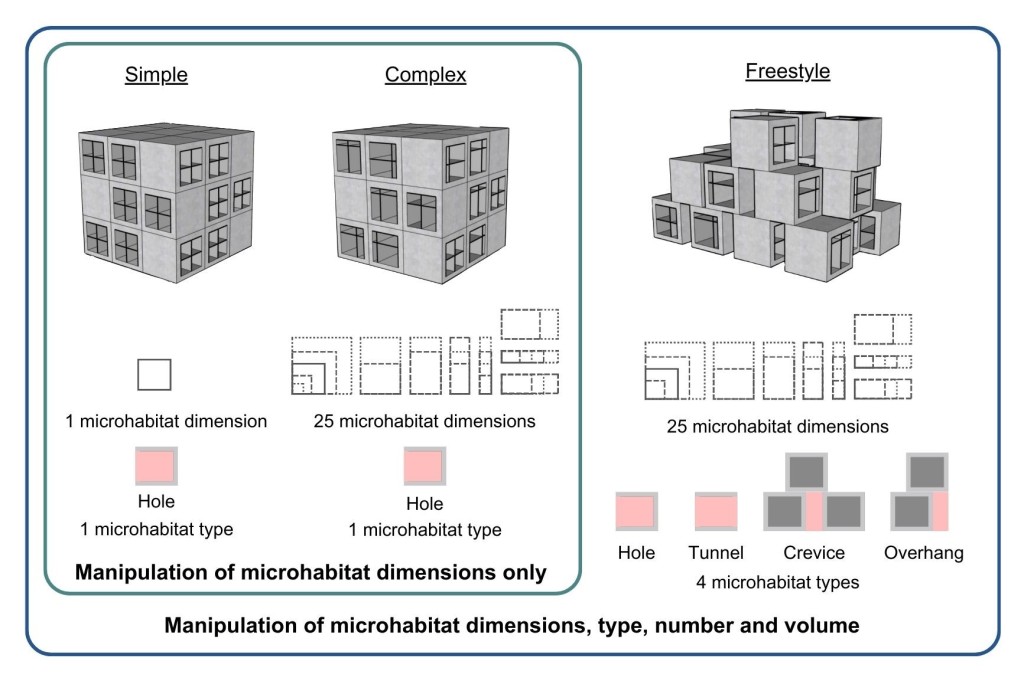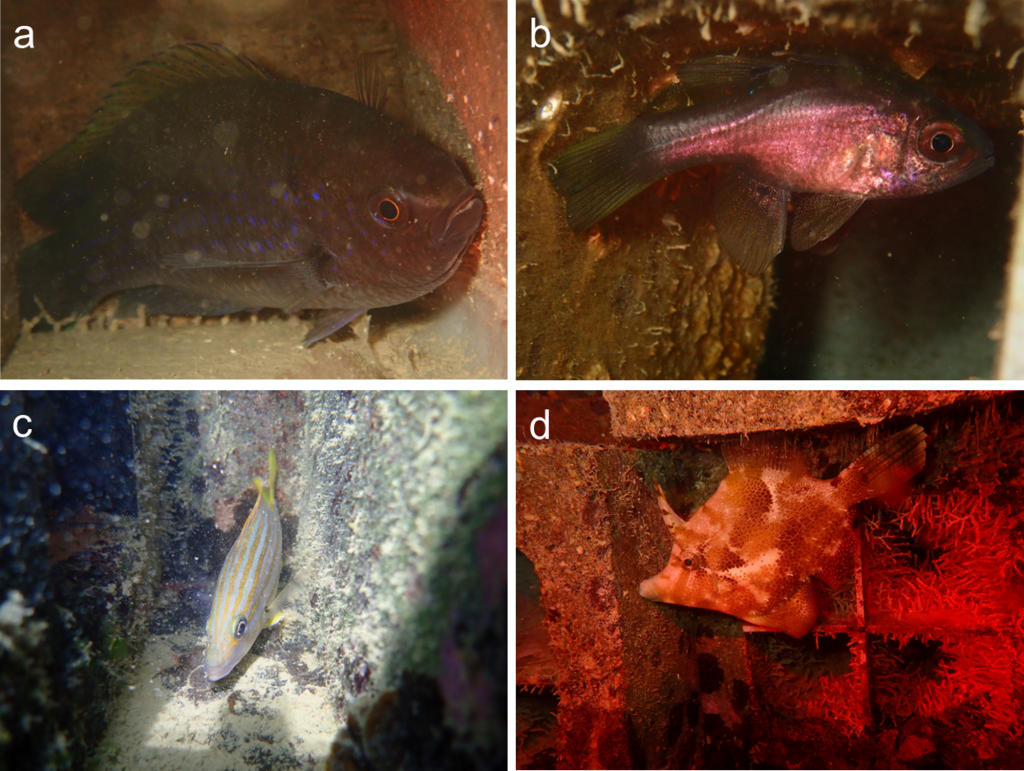Authors of a recently published research article explain how, to enhance fish diversity, it is important to provide three-dimensional habitat architecture that incorporates a wide range of microhabitat sizes and types.
Habitat complexity
Habitat complexity is a key driver of marine fish diversity and essential for determining structure and function of fish communities. Many fishes use benthic habitat features (e.g. holes, crevices, vertical reliefs, and overhangs) for a variety of reasons including resting, breeding, foraging and predator avoidance. So, more complex habitats have more habitat features and tend to support greater fish diversity while degraded, less complex habitats provide fewer microhabitats for fish.
Rapid population growth in coastal cities coupled with sea level rise is driving the current expansion of hard shoreline defences globally. This prevalence of ‘grey’ infrastructure (e.g. seawalls) often results in nearshore habitat loss. Furthermore, these hard engineered structures offer low topographic complexity, threatening coastal ecosystems and biodiversity. Among academics, coastal managers and engineers, there is a growing interest in achieving sustainable development by integrating ecological principles into coastal engineering designs, known as ‘eco-engineering’.

Various eco-engineering interventions have been trialled to test their effects on seawall biodiversity. These often increase habitat complexity, for example, by retrofitting additional habitat features to existing seawalls. To date, such efforts have mostly been designed to attract sessile organisms and small motile invertebrates, but few have attempted eco-engineering at scales relevant to larger marine life like fish.
Creating homes for fish on seawalls – fish houses!
In a new article published in Journal of Applied Ecology, we assessed the effect of habitat enhancement units (which we call ‘fish houses’) designed to offer varying degrees of habitat complexity, on fish diversity along seawalls in Singapore using SCUBA diving and underwater video footage. Our study is among the first to develop eco-engineering design specifically for fish.

We also quantified less explored aspects of eco-engineering research, such as comparing responses across different scales (habitat features and whose fish houses), between day and night, and between taxonomic (based on species) and functional (based on selected functional traits) diversities.
Fish diversity-complexity relationships are complicated
While the effect of a single complexity element (manipulation of habitat feature size variability) alone was modest, increased complexity via combinations of added habitat feature size variability, types, and surface area/volume substantially enhanced fish abundance and species richness and influenced fish community structure by supporting distinct species and unique functional traits. We think that providing a range of habitat feature sizes encourages fishes with unique body shapes and large sizes.
Interestingly, our results were largely dependent on spatial scales, diel cycles, and diversity assessment approaches. Positive complexity effects were clearer when only assessing fish that used specific habitat features compared to those recorded in and around the whole fish house. The contrasting patterns of habitat feature utilisation between day and night led to differential fish-microhabitat size relationships across diel cycles.
During the daytime, fish mostly searched for food and interacted with larger habitat features. At night, fish preferred resting in tight-fitting habitat features with less visual exposure to predators. Furthermore, fish community structure based on functional traits was more sensitive to complexity manipulation than the one based on taxonomic classifications.

Management implications
We highlight some key considerations for eco-engineering designs, including:
- spatial-scale dependent effects of added complexity
- diel variations in fish-microhabitat relationships
- choice of assessment metrics (i.e. taxonomic vs functional diversity).
Combinations of the wider size ranges, and greater numbers and types of habitat features, provide opportunities for habitat utilisation by both small sedentary and large motile fishes.
Though our study only assessed fish diversity, future eco-engineering research should incorporate cross-taxa habitat niches (from millimetre to metre scales), given the importance of trophic interactions across different taxa for biodiversity enhancement, ecological functioning, and ecosystem services. We hope that our findings are useful for practitioners and inform effective eco-engineering designs to achieve specific conservation goals.
Read the full article “Fish responses to manipulated microhabitat complexity in urbanised shorelines” in Journal of Applied Ecology.